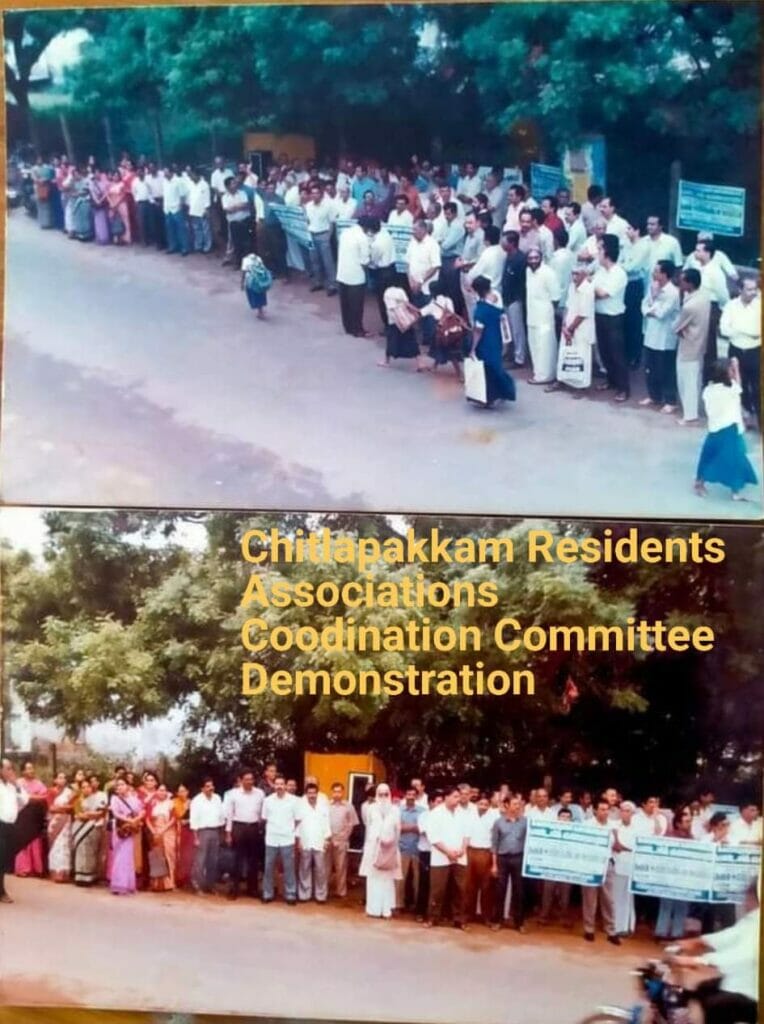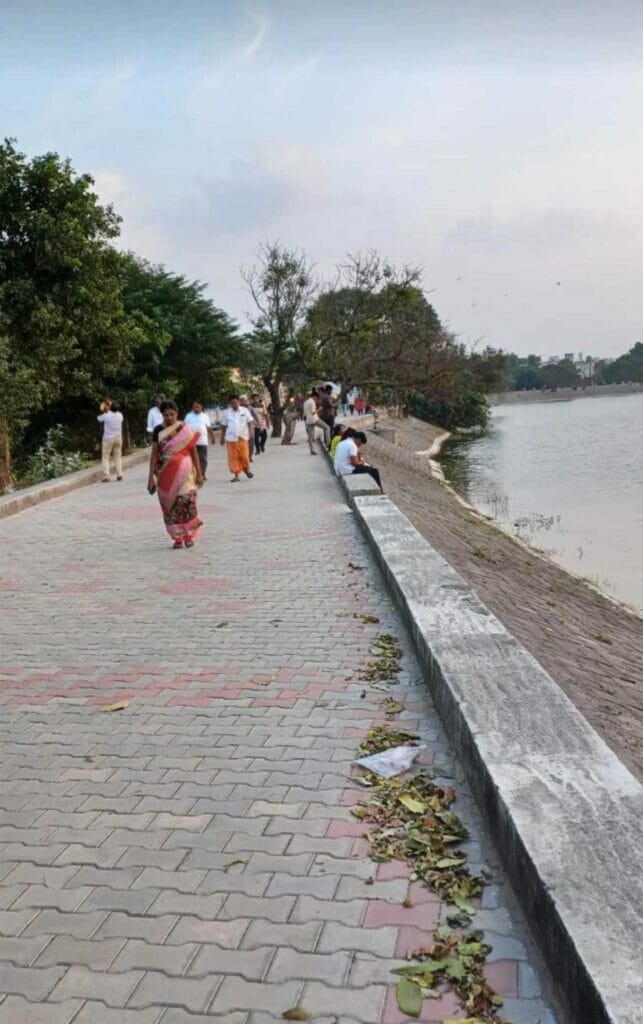The Chitlapakkam Lake has been catering to the needs of agricultural lands and residents of Chitlapakkam by supplying an abundance of water for decades. The lake has seen what was once a sparsely populated area turning into a fast-growing suburb over the years.
The availability of clean water and air attracted many to Chitlapakkam and has catalysed its urbanisation, with the lake at its centre. From the 1970s to the 1990s, the lake witnessed the area’s explosive growth as more and more people made Chitlapakkam their home.
As pollution and encroachment had not been major issues, the lake was able to play a role in helping keep Chitlapakkam’s groundwater table healthy. Most homes had wells and water was available throughout the year. Drought was unheard of in these parts.
With the slow but steady growth in population came a sea change around the lake. The water needs of residents grew more with time.
Residents protect Chitlapakkam lake
There were also encroachments and new attempts to make use of the areas around the lake. The Tamil Nadu Housing Board (TNHB) made plans to construct some tenements in the 1990s.
By this time, residents had found merit in collective bargaining and had organised themselves into various Residents’ Welfare Associations. There was the formation of the ‘Coordination Committee of Chitlapakkam Associations’. The body took up common issues faced by residents, the first of which was the preservation of the Chiitlapakkam Lake.
Thanks to the involvement and objections raised by many residents’ forums in the area, the plans for construction by the TNHB were halted, protecting the sanctity of the areas around the lake.
Residents carried out peaceful protests such as forming a human chain and also created a ’Chitlapakkam Lake Preservation Committee‘ with one of the resident forum members as Treasurer.
The residents of Chitlapakkam have shown great care and concern for the lake’s preservation over the years. These protests were one of many steps taken by them to save the lake. Almost all Chitlapakkam residents have contributed Rs 100 each to construct a bund around the lake. Without the bund, the lake could have been lost to encroachments a long time ago.
Read more: 2015 or 2017, monsoon rains bring same misery for Chitlapakkam residents
Decline of Chitlapakkam lake
Despite such efforts, the lake has shrunk in size and has been affected by pollution and encroachments over the years. Ironically, the first encroachments were by the government itself.
On the northern side, there came up a government school and health centre. On the available space on the northern side, garbage has been dumped for years, resulting in pollution. The mound of garbage accumulated nearby used to frequently catch fire and fill the area with toxic smoke.
Sewage water too has been dumped from various places into the lake, adding to the lake’s woes.
With time, water levels decline and the groundwater table too has fallen. People have resorted to having to use borewells.
In its heydays, the lake was able to check drought and also serve as an avenue for excess water to drain. When drought and urban flooding became commonplace, residents realised that the decline of the lake was one of the reasons.
Attempts to ensure the revival of Chitlapakkam Lake
There was heavy rain and flooding in Chitlapakkam in 2015, 2016 and 2017. But the bund was one of the reasons there was no overflow from the lake. The residents of the present recognised the need to deepen and desilt the lake and ensure its protection much like how the earlier residents had done so collectively.
Forums such as Chitlapakkam Rising have taken up the cause of the revival of the lake with great vigour and support from the residents.
The efforts of the then Kancheepuram collector have helped move the garbage accumulated on the northern side and the removal of water hyacinth.
With these efforts, the Public Works Department (PWD) sanctioned the desilting of the lake in 2019 to the NGO Chitlapakkam Rising. Chitlapakkam Rising stepped in and began the preliminary work of clearing garbage and cleaning up the area with the help of all residents’ forums in the area and the residents. A sum of Rs 25 crore was also allotted by the Tamil Nadu government for the desilting and deepening of lake beds, prevention of dumping of sewage and restoration of rainwater inlets.
Though the work was started in February 2020, it had to be put on hold due to the pandemic.
After a wait of three years, a few months ago, efforts resumed to achieve the original objective of improving the lake.
Read more: Jolted by water shortage, Chitlapakkam RWA takes up roadside rainwater harvesting
Way forward for Chitlapakkam Lake
A walker’s path has been constructed on the eastern and northern side, saplings have been planted along the bunds and regular watering is taking place thanks to the volunteers of NGO Nizhal. CCTV too has been installed for monitoring activities around the lake.
An amphi theatre (open-air theatre) is coming up on the eastern side.
All these moves have created a renewed interest in the lake among the people in the area. Chitlapakkam feels like how it was in the days gone by.
With the continued involvement of the residents and residents’ forums, local leaders, the press and with the allocation of funds from the government there has been a new ray of hope.
Hundreds visit the lake on a daily basis now and it is a thriving community space.
There is still room for improvement with the following tasks pending.
What the lake now needs is a complete bund formation on the western and southern sides, completion of compound walls on all sides, better-lit walker’s paths and the cleaning up of water channels to allow the flow of water from Pachamalai hills to the lake.
With plans to complete all these tasks and more that have been mentioned in the Detailed Project Report (DPR) in the works, the lake’s glory days as the nerve centre of the community could well be brought back.

